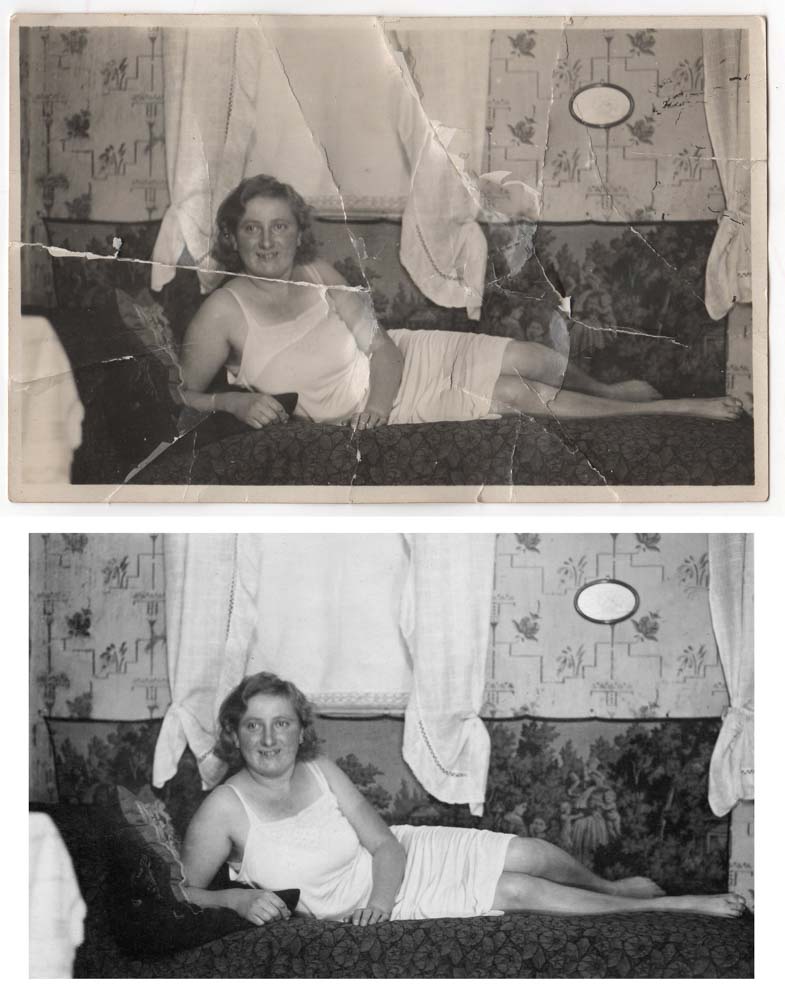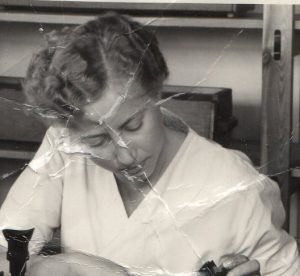
What is Digital ICE? And when to use it for dust and scratch removal.
What is Digital ICE?
Digital ICE enables scanners to automatically detect and repair scratches and remove dust particles when scanning negatives or slides.
Although scanners and scanning software keep on evolving and become better with every update we can’t emphasize enough how important it is to clean your negatives and slides before actually scanning them. To understand why it is so crucial to properly clean your negatives and whether Digital ICE can replace photo restoration it is important to understand what so-called “Anti Dust and Scratch” features can and can not do.
Digital ICE – What it can and what it can’t do
Understanding Digital ICE Technology
Digital ICE is a fairly old technology dating back to the late 80s. It automatically “cleans” and “repairs” negatives and slides from scratches and dust. The actual process is split up into two parts. This automated photo restoration can not be compared to professional photo restoration services.
The first part is taking place in the hardware of the scanner. The l scanning unit contains a pair of light sources. An RGB light source and an infrared light source. Hence, the scanning process is split up into two cycles. The first cycle creates the actual scan of the negative or slide by using the RGB light source. In the second cycle, the negative or slide is scanned again this time with the infrared light source. As damaged or covered areas reflect that light differently the scanner is able to detect these areas and automatically mask them.
The second part, the actual “repair” of these areas is performed by an algorithm which analyzes the surrounding pixels of the damaged areas. By doing so it is able to predict what pixels are missing and adds them to the affected area.
As clever and useful, this technology is, it is certainly not magic. There is a crucial difference between recreating and predicting what is missing. Whether it makes sense to use Digital ICE or not is highly dependent on what areas and what amount of the photo is damaged.
When does it make sense to use Digital ICE?
Digital ICE works wonderfully with homogenous areas and on the complete opposite with areas that don’t follow a specific pattern. Everything in-between often causes glitches or artifacts. This becomes especially obvious when applying Digital ICE on damaged faces.
Why is that?
The reasons for that is that the algorithm only works with mathematically predicting what pixel is missing and does not grasp the concept of the object it is trying to fix. The algorithm doesn’t know that it is currently “repairing” a face and that a face needs two eyes, a mouth, and a nose to actually be a face. And that’s only the beginning of it. A smiling face differs a lot from a crying or a scared face and on top of that, each face is unique. To be able to restore such damaged areas it is crucial to understand the object. This is something only we humans can do.

 Take a look at how the face is being demolished by the algorithm.
Take a look at how the face is being demolished by the algorithm.
Vice Versa the algorithm does a great job where there is no real concept to grasp. Like sky or grass. The sky usually is very homogenous. The pixels next to each other only differ very little. Therefore predicting the missing pixels works great. Grass on the other side grows very chaotic and follows no real pattern. Although the prediction certainly is not what the original was like our eyes are incapable of seeing that. Of course, this only works to a certain degree.

 Although far from perfect the algorithm is doing a way better job than on the woman’s face.
Although far from perfect the algorithm is doing a way better job than on the woman’s face.
What about Artificial Intelligence?
The algorithms operating in your scanner software are everything but intelligent. Compared to what a human brain is capable of these algorithms are pretty much dull. Nevertheless, recent developments in A.I. are showing promising results for the future. Take a look at Nividas Inpainting A.I.
These neural networks have been trained with tens of thousands of images. This enables them to get a better understanding of the context and the objects they’re repairing thus creating more accurate and better results.
As amazing and unbelievable this seems to be the technology is still very far away from being applied to new scanners and software. Up until today, these kinds of damages can only be reconstructed with photo restoration.
Should I use Digital ICE or not?
Whether you should use Digital ICE or not depends on the photo you are scanning. Small disrupted areas in non-vital parts of the image can easily be repaired with Digital ICE technology.
Images which have suffered severe scratches or damages have to be properly repaired with the means and techniques of photo restoration. We as a photo restoration service have gained years of experience in restoring and reconstructing those damaged areas. If you like to get a free estimate on restoring your damaged photo or negative just check out our website www.instarestoration.com
What about dust?
Unlike scratches or other damages dust often is only covering specific areas on the surface of the negative or slide. This means that it is possible to carefully remove these particles without damaging the photo or negative. It is crucial to understand that it’s always better to physically clean negatives or slides than applying Digital ICE to your scan. Remember Digital ICE is only predicting what is being covered by the particles. It is not able to recreate the original state of the image.
Especially when scanning 35mm film small dust particles can already hide important details of your photograph.
As the proper cleaning of your negatives or slides is crucial for their well-being you should read our tutorial about how to clean negatives and slides.